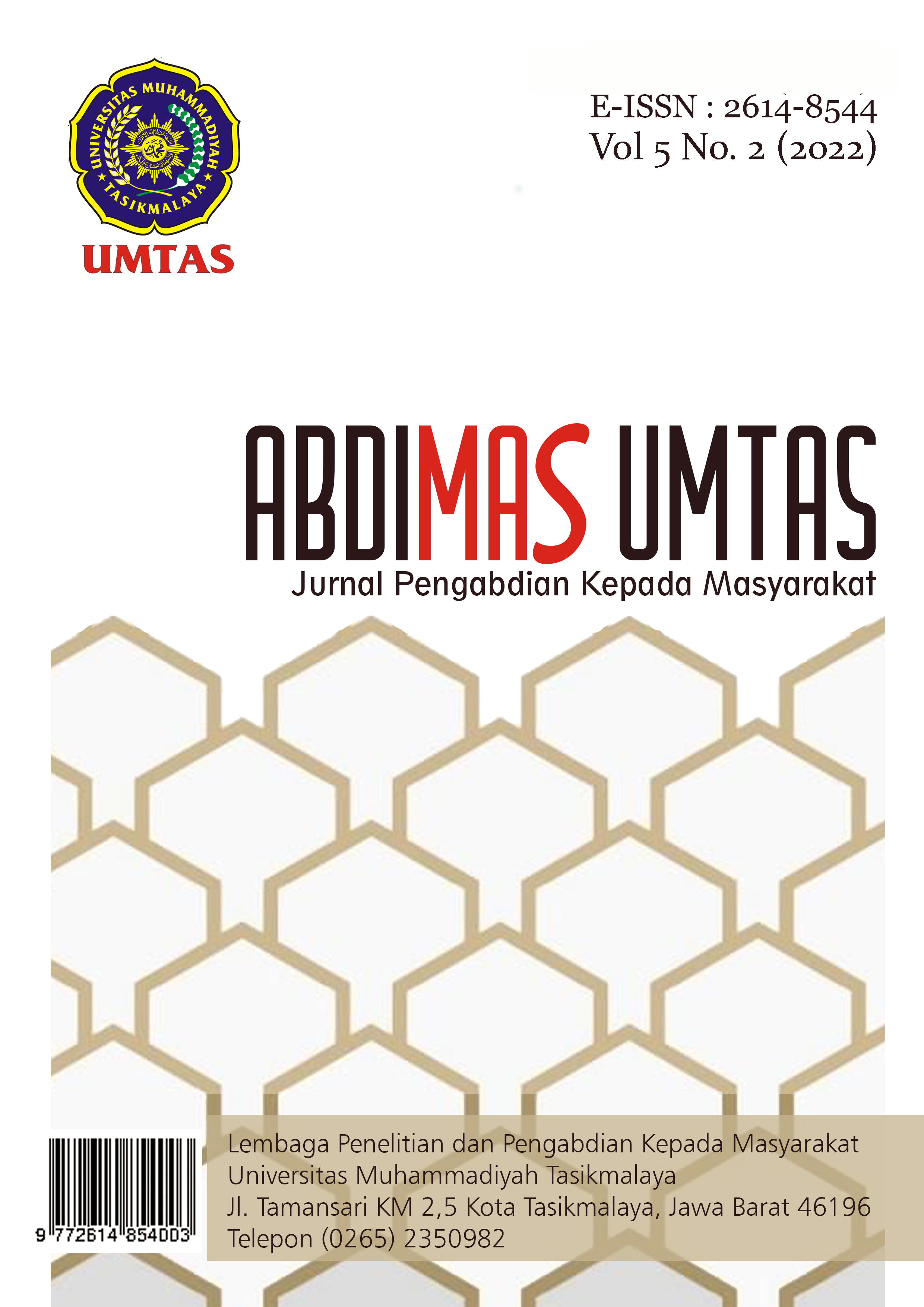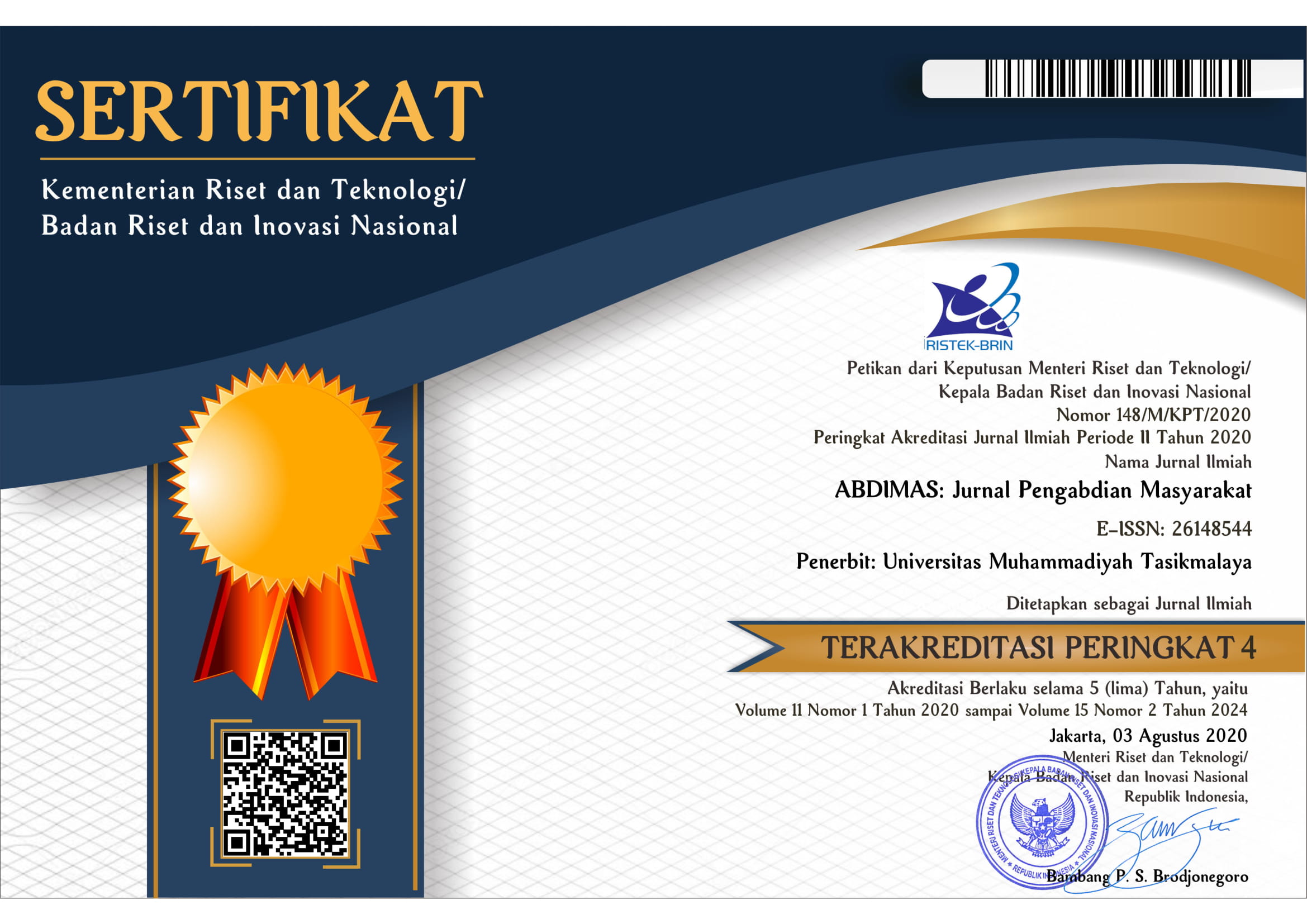Eco-Printing: The Potential of an Eco-Friendly Economy in the Era of a Pandemic
DOI:
https://doi.org/10.35568/abdimas.v5i2.2766Keywords:
Eco-print, Environmentally Friendly, Economic Potential, MSME HandycraftAbstract
Eco-print is a fabric dyeing technique from ecology or plants commonly known as eco-dyeing. Eco-print aims to print patterns and colors on fabrics to produce unique, natural, and authentic motifs. The principle used is to attach flowers, leaves, stems, or other parts of plants that contain color pigments to the fabric media. Fabrics that are given motifs and colors with eco-print techniques can evolve into batik products, bags, umbrellas, and other crafts. In other words, Eco-print products do not use synthetic or chemical dyes but utilize natural patterns and colors from plant parts such as twigs, leaves, stems, and flowers. The eco-print method is thus very environmentally friendly by utilizing materials found in the surrounding environment. In addition, eco-print-based products have economic prospects during the COVID-19 pandemic because people have started to care about the environment. This product is also exclusive and unique because the motifs and colors produced are never the same. The uniqueness of the motif is unlimited depending on creativity. Each cloth has a variety of motifs according to the type and layout of the plants used. Each fabric is different from other fabrics in terms of motifs and colors. It is an economic potential that causes eco-print products to have a higher selling value than synthetic products. Thus, eco-print products are not mass products. Each product uses a set of plants as a pattern and is disposable. The primary color dyeing process, the length of steaming, the technique of placing plants on the cloth, the rolling technique, and the intensity of sunlight when drying will produce different results on each sheet of fabric, although the technique used is always the same. The print results are often unexpected and quite surprising. It is interesting and challenges eco-print craftsmen to keep experimenting to produce quality and standardized products. After the eco-print training, MSME women in Sukolilo produced batik clothes, headscarves, jute combination bags, and tablecloths. The products from this eco-print need a network to be able to reach potential markets both locally and globally
Downloads
References
A’Bear, A.D., Jones, T.H., Kandeler, E., Boddy, L. Interactive effects of temperature and soil moisture on fungal-mediated wood decomposition and extracellular enzyme activity. 2014; 70: 151-158.
Bani. A, S. Pioli, M. Ventura, P. Panzacchi, L. Borruso, R. Tognetti, G. Tonon, L. Brusseti. The Role of Microbial Community in the Decomposition of Leaf Litter and Deadwood. Applied Soil Ecology. 2018; 126: 75-84.
Flores-Diaz. M, L. Monturiol-Gross, C. Naylor, A. Alape-Giron, A. Flieger. Bacterial Sphingomyelinases and Phospholiapses as Virulence Factors. Microbiology and Molecular Biology Review. 2016; 80(3): 597-628.
Hufad, A., Pramudia, J. R., & Hilmi, M. I. (2017). The Empowerment of Environmentally Friendly Women. 1st International Conference on Educational Sciences, 693–696. https://doi.org/10.5220/0007046606930696
Khaton, H., P. Solanki, M. Narayon, L. Tewari, and J.P.N. Rai. Role of Microbes in Organic Carbon Decomposition and Maintenance of Soil Ecosystem. International Journal of Chemical Studies. 2017; 25: 1648-1656.
Maryuningsih, Y., Muspiroh, N., Sholeha, S., Maemunah, A., & Wijaya, R. S. (2021). Pelatihan Ecoprint sebagai Pemberdayaan Ekonomi Kreatif bagi calon Pengusaha dengan Pendekatan ABCD models. Jurnal Indonesia Mengabdi, 3(2), 36–43. https://doi.org/https://doi.org/10.30599/jimi.v3i2.1317
Perez. J, J. Munoz-Dorado, T. de la Rubia, J. Martinez. Biodegradation and Biological Treatments of Cellulose, Hemicellulose and Lignin: an Overview. International Microbiol. 2022; 5: 53-63.
Power, K. (2020). The COVID-19 pandemic has increased the care burden of women and families. Sustainability: Science, Practice and Policy, 16(1), 67–73. https://doi.org/10.1080/15487733.2020.1776561
Suparmi, S., & Putri, A. N. (2022). Creative Economy Empowerment with Technopreneur Training For Muhammadiyah Teachers in Tasikmalaya City. Abdimas: Jurnal Pengabdian Masyarakat, 5(1), 1882–1884. https://doi.org/https://doi.org/10.35568/abdimas.v5i1.2159
Walker. TS, Bais HP, Grotewold E, Vivanco JM. Root Exudation and Rhizosphere Biology. Plant Physiology. 2003; 132(1): 44-51.
Millah, S. (2020). PBB, WHO, dan WWF Sebut Pandemi Corona Karena Kerusakan Alam. Bisnis.Com. https://kabar24.bisnis.com/read/20200617/19/1254006/pbb-who-dan-wwf-sebut-pandemi-corona-karena-kerusakan-alam














